- Topics
-
Topics
See our analysis on civil society and how it shapes culture, politics, and policies
Read our insights on the shifting political landscape and what it means for Palestine
Learn more about the policies and practices shaping the Palestinian economy
Strengthen your understanding of the unique conditions for Palestinian refugees across the Middle East
-
- Analysis
-
Analysis
In-depth analysis on existing or potential policies that impact possibilities for Palestinian liberation.
Insights and perspectives on social, political, and economic questions related to Palestine and Palestinians globally.
Concise analysis into a specific policy, its background and implications.
Commentary that brings together insights from multiple analysts.
Compilations of past Al-Shabaka works surrounding a specific theme.
Longer-form, ad hoc projects that seek to confront research questions outside the scope of our regular analysis.
A policy-driven research initiative by Al-Shabaka: The Palestinian Policy Network.
Our monthly webinar series that brings together Palestinian experts.
Featured
On Thursday, June 19, 2025, Israeli Prime Minister Benjamin Netanyahu stood in front of the aftermath of an Iranian strike near Bir al-Saba’ and told journalists: “It really reminds me of the British people during the Blitz. We are going through a Blitz.” The Blitz refers to the sustained bombing campaign carried out by Nazi Germany against the UK, particularly London, between September 1940 and May 1941. With this dramatic comparison, Netanyahu sought to elicit Western sympathy and secure unconditional support for his government’s latest act of military escalation and violation of international law: the unprovoked bombing of Iran. This rhetorical move is far from new; it has become an enduring trope in Israeli political discourse—one that casts Israel as the perennial victim and frames its opponents as modern-day Nazis. Netanyahu has long harbored ambitions of striking Iran with direct US support, but timing has always been central. This moment, then, should not be viewed merely as opportunistic aggression, but as part of a broader, calculated strategy. His actions are shaped by a convergence of unprecedented impunity, shifting regional dynamics, and deepening domestic political fragility. This commentary examines the latest escalation in that context and discusses the broader political forces driving it. Yara Hawari· Jun 26, 2025Launched on May 26, 2025, and secured by US private contractors, the new Israeli-backed aid distribution system in Gaza has resulted in over 100 Palestinian deaths, as civilians navigated dangerous conditions at hubs positioned near military outposts along the Rafah border. These fatalities raise grave concerns about the safety of the aid model and the role of US contractors operating under Israeli oversight. This policy memo argues that the privatization of aid and security in Gaza violates humanitarian norms by turning aid into a tool of control, ethnic cleansing, and colonization. It threatens Palestinian life by conditioning life-saving aid, facilitating forced displacement, and shielding the Israeli regime from legal and moral responsibility. It additionally erodes local and international institutions, especially UNRWA, which has been working in Gaza for decades.
Yara Hawari· Jun 26, 2025Launched on May 26, 2025, and secured by US private contractors, the new Israeli-backed aid distribution system in Gaza has resulted in over 100 Palestinian deaths, as civilians navigated dangerous conditions at hubs positioned near military outposts along the Rafah border. These fatalities raise grave concerns about the safety of the aid model and the role of US contractors operating under Israeli oversight. This policy memo argues that the privatization of aid and security in Gaza violates humanitarian norms by turning aid into a tool of control, ethnic cleansing, and colonization. It threatens Palestinian life by conditioning life-saving aid, facilitating forced displacement, and shielding the Israeli regime from legal and moral responsibility. It additionally erodes local and international institutions, especially UNRWA, which has been working in Gaza for decades.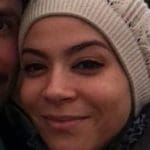 Safa Joudeh· Jun 10, 2025In this policy lab, Mariam Barghouti and Sharif Abdel Kouddous join host Tariq Kenney-Shawa to discuss Israel’s targeted assassination campaign against Palestinian journalists, the complicity of Western media in normalizing these crimes, and how this silence allows Israel to get away with genocide.
Safa Joudeh· Jun 10, 2025In this policy lab, Mariam Barghouti and Sharif Abdel Kouddous join host Tariq Kenney-Shawa to discuss Israel’s targeted assassination campaign against Palestinian journalists, the complicity of Western media in normalizing these crimes, and how this silence allows Israel to get away with genocide.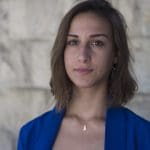 Mariam Barghouti· May 28, 2025
Mariam Barghouti· May 28, 2025
-
- Resources
- Media & Outreach
- The Network
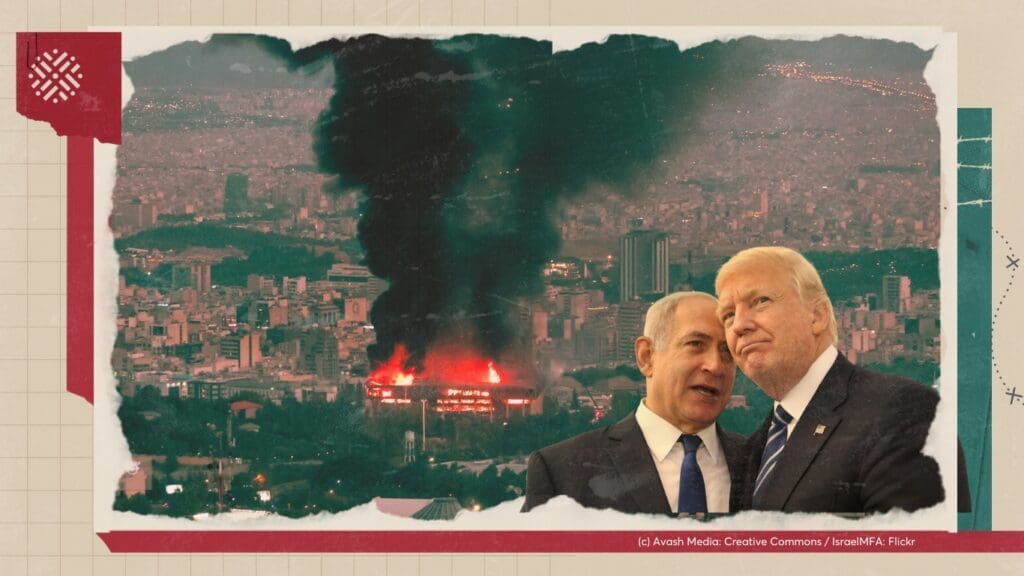
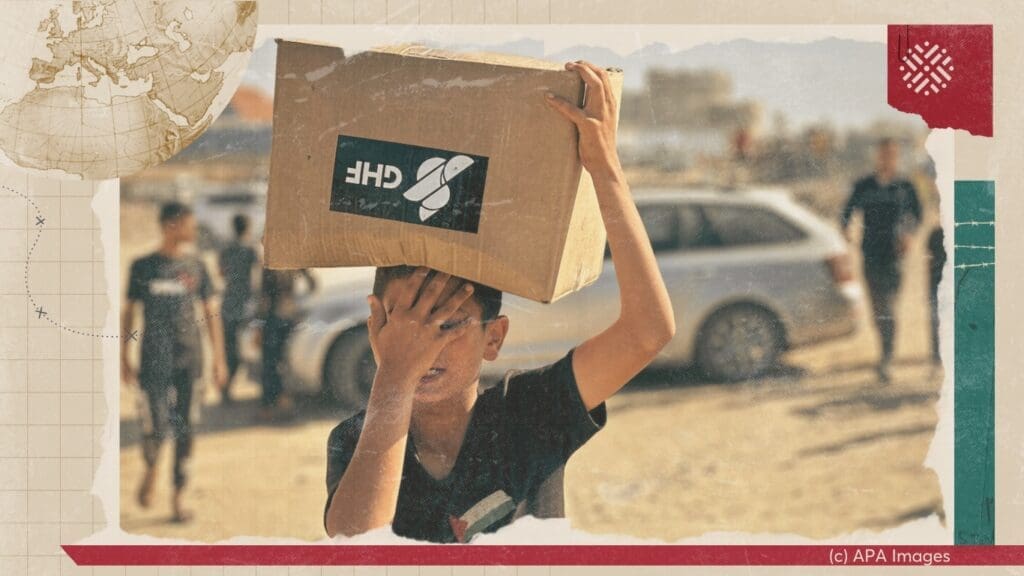
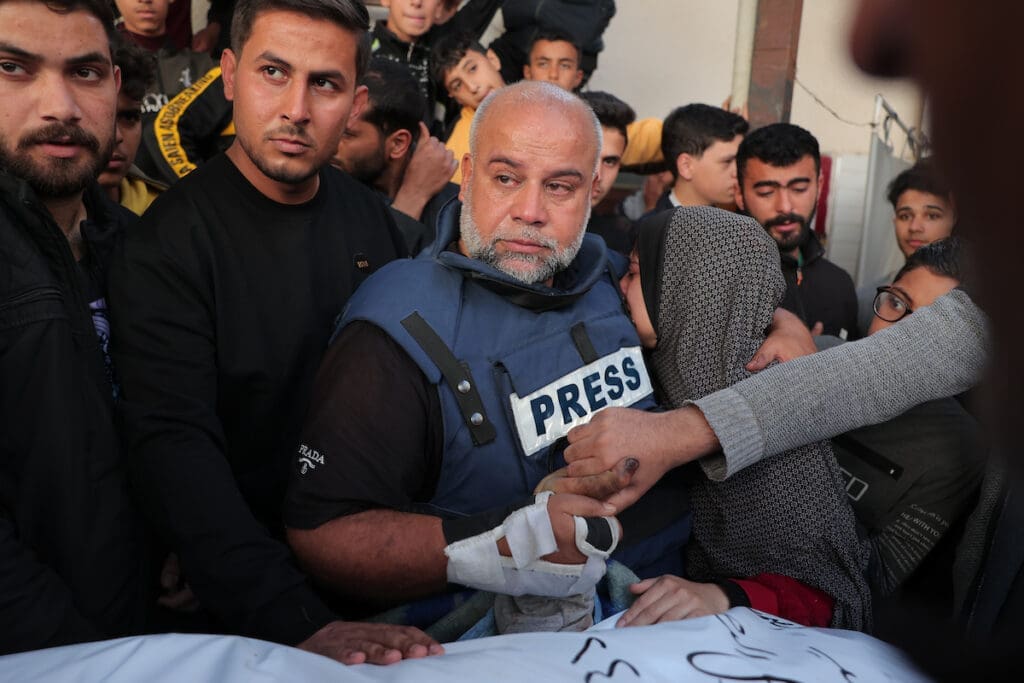

Palestinian Representation: Elections vs. Consensus-Building
This commentary is an excerpt from a larger report, “Reclaiming the PLO, Re-engaging Youth,” published in August 2020. Please refer to the report’s introduction for more information about its contents and contributors.
Palestinians have for years attempted to revive their national representative, the Palestine Liberation Organization (PLO). As part of these efforts, many Palestinians have demanded direct elections to the Palestinian National Council (PNC), the PLO’s legislative body. However, the PLO is not a state and the Palestinian people have multiple civic statuses depending on their geographic location. Thus, any attempt to address the question of elections must take such challenges into account. This paper aims to widen the discussion of representation by examining two key questions: The form of representation and the challenges posed by the structures of the PLO itself, and concludes with some suggestions for the future.
Securing Representation Through Engagement
Arabic distinguishes between tamtheel syasi (political representation) and inkherat syasi (political engagement). This is a vital distinction and any discussion of PLO representation must be defined in the political terms of engagement and participation. According to the PLO Basic Law, Palestinian engagement in PLO institutions is a national duty, as is written in chapter one, article 41:
All Palestinians are natural members of the Palestine Liberation Organization, performing their duty to liberate their country in accordance with their abilities and qualifications. The Palestinian people is the base of this Organization.
The fact that the PLO adopted a guerrilla style of resistance and insisted that Palestinian decision-making be independent of the Arab regimes gave it the legitimacy to mobilize and engage the Palestinians, particularly those in the refugee camps, who had hitherto been viewed as unfortunate victims. As Fathi Abu al-Ardat put it: “For the first time after the Nakba and the defeat of 1967, the establishment of the PLO created a point of reference around which our people could gather and pool their energies.”
Thus, after the guerrilla organizations took over the PLO in 1968-69, ordinary Palestinians became deeply engaged in PLO institutions, both political and community-based. The membership of the PNC was reformulated to include diverse factions, groups, and individuals, among them representatives of refugee camps and professional associations. Authentic representation, therefore, was gained through political engagement and by creating a sense of belonging. The people at all levels gave legitimacy to the PLO because of their involvement in collective action. This form of political representation was similar to that of other national liberation movements2.
It is essential to determine the PLO’s role vis-à-vis the PA and to reinvigorate its representative status through engagement from and by the Palestinians Share on X
In 1974, ten years after the establishment of the PLO, the Arab Summit in Rabat recognized it as the “sole legitimate representative of the Palestinian people” considering it responsible for acting on behalf of Palestinians everywhere3. That same year on November 22, the PLO was given observer status at the United Nations General Assembly, representing the Palestinian people in the name of Palestine. It also represented Palestine at the Movement of Non-Aligned Countries, the Organization of the Islamic Conference, and in many other platforms, and opened new embassies and representative offices around the world.
This type of political representation, achieved through regional and international recognition, built on the popular representation that the PLO had previously achieved and was celebrated by Palestinians, especially as it reinforced the independence of the Palestinian political decision. It enabled the PLO to negotiate and sign political agreements representing the Palestinian people as was later done with the Oslo Accords in the 1990s.
For a liberation movement like the PLO, the legitimacy of representation was fundamental in creating the Palestinian national movement and its structures while rebuilding Palestinian identity by engaging the people in a common political national project. It is worth emphasizing that representation was achieved through securing engagement and seeking recognition rather than through elections (see also Mouin Rabbani’s argument). The PLO’s representative character was not questioned until it was seen as abandoning the Palestinian people’s national demands.
The PLO’s Disengagement from the Palestinian People
Until 1988 the PLO aimed to represent all Palestinians and to mobilize them to take part in the liberation of Palestine. In fact, the abandonment of that goal began gradually in 1974 with the PLO’s adoption of its Ten Point Program, which states its willingness to build national authority “over every part of Palestine territory that is liberated” with the aim of eventually completing the liberation of all Palestinian territory. However, the PNC meeting of 1988 marked the official acceptance of the two-state solution – which would reduce Palestine and the Palestinians both geographically and demographically – as a final resolution of the so-called Palestinian-Israeli conflict.
The establishment of the Palestinian National Authority (PA) in 1994 within the limited territorial zones agreed with Israel through the Oslo Accords marked a significant stage in the PLO’s evolution and brought new challenges. While it officially remained the sole legitimate representative of the Palestinian people, there was growing doubt about the extent of its political representativity. To begin with, the center of gravity of political activity shifted to the territory Israel occupied in 1967. Further, the PA, which was originally supposed to operate as an administrative entity for five years, became a permanent political reality dependent on voters residing in the Occupied Palestinian Territory (OPT).
Thus, in addition to the exclusion of the Palestinians in Israel, Palestinians living in the diaspora were marginalized in the new political structures, as was their engagement in PLO institutions. Furthermore, PLO structures were hollowed out as decision-making moved to the PA and its institutions, although the same person remained the chairman of the PLO and president of the PA (Yasser Arafat held these positions until his death in 2004, when Mahmoud Abbas took over). In effect, after Oslo, the PLO lost its primary purpose of liberation and with it a significant segment of the Palestinian people – the refugees. The PA dominated the political scene, representing a new era of state building, governance, and citizenship, and the majority of the Palestinian people were not part of it.
The question of representation, therefore, goes beyond the narrow focus of numbers, seats, and power sharing. Rather, it is about which Palestinians the PLO and the PA are seeking to represent and, more importantly, what political project the PLO is seeking to achieve. Following the classic definition of political representation, it is possible that structural reforms could enhance the representative status of the PLO4. However, the question remains as to whether restructured institutions would in fact represent Palestinian demands for self-determination and freedom.
Reforming the PLO: Back to the Past or Forward to the Future?
The current structure of the PLO is grounded in the amended PLO Charter and the Basic Law that was established in 1968 after the Palestinian resistance groups took control. The main amendment undertaken by the new leadership was to move the PNC away from an electoral system of representation based on majority rule to a quota system and decision-making by consensus. Consensus, known in Arabic as ijmaa, was adopted to strengthen political unity rather than rivalry and clashes, and to ensure that specific groups associated with Arab regimes would not have the ability to undermine the process. In addition, it was extremely difficult to hold democratic elections given the dispersal of Palestinians who were now under the control of different states.
If the PLO decides to go for statehood-building, then the method of elections should reflect the internal diversity that creates a culture of political debate, differences, and competition Share on X
Moreover, decision-making by consensus suited the nature of the PLO as an umbrella for the many revolutionary groups it encompassed. It also suited a context characterized by rapid, dramatic change because it privileged the pursuit of common goals over ideological differences. In addition, achieving consensus depended on negotiations and agreement among all the parties, which had the potential to empower smaller parties and groups such as women and unions. However, theory does not necessarily reflect reality, especially as relates to the political behavior of collective societies such as Palestinian society.
To understand politics in Palestinian society also requires understanding Arab social structure. Halim Barakat emphasizes that Arab society is a mirror image of the family. Parties and Palestinian factions became the new family for members who transformed the same hierarchy of age and loyalty to the father/leader5. Therefore, despite the development of the Palestinian national movement and the shift from the pre-1948 familial model of politics, when the Husseini and Nashashibi families dominated, the political behavior has not greatly matured. This affected the representative nature of the PLO and helps to explain the lack of new faces and names in leadership positions.
In reality, therefore, the quota system and the method of appointment facilitated the domination of powerful political parties in the PLO, mainly Fatah. These mechanisms also maintained social hierarchies through the appointment of “suitable” persons according to the standards prevailing in Palestinian society, marginalizing such groups as women, youth, new factions, and those who opposed PLO political decisions. Thus, the downside of the consensus model of politics is that it risks the domination of one party over the others. Indeed, many view the PLO and Fatah as two sides of the same coin.
The unchanged nature of the PLO’s structure has contributed to the centralization of power in the hands of the same groups and individuals given the absence of elections or expanded consensus-building to bring in groups such as Hamas, which represent significant numbers of Palestinians but are in opposition to PLO policies – though their stance appears to be softening (see Belal Shobaki’s paper in “Reclaiming the PLO, Re-engaging Youth”). There is no new blood to reinvigorate the PNC or the other key bodies of the PLO, the Executive Committee and the Central Council6. Nor have there been elections for the Palestinian Legislative Council in the OPT or for the president of the state of Palestine since the split between Hamas and Fatah in 2007 (local elections have continued to be held).
This state of affairs harms not only the effectiveness of the political system but also the legitimacy of the PLO itself. Reforming the PLO is fundamental if it is to be more representative and regain its legitimacy among the Palestinian people. It is worth mentioning that in addition to the absence of representative elections or the expansion of the PNC to include significant new groups, there is duplication and concentration of power in the PLO’s structures. The Executive Committee (EC) and the Central Council (PCC) share common functions and power is concentrated in these two bodies – particularly the EC – at the expense of the PNC. A redistribution of power should be considered in any reform of the PLO, with consideration given to dismantling the EC and keeping the PNC and the PCC.
Many of the initiatives to reform the PLO suggest practical frameworks for conducting elections and distributing power. However, most of these initiatives lack a deep discussion of the nature, role, and functions of the PLO – and most importantly, its political program. Unless there is an answer to the question of what the PLO is – a liberation movement, a state-building organization, or both, it will become an empty shell with fictitious institutions. Furthermore, it is essential to determine the PLO’s role vis-à-vis the PA and to reinvigorate its representative status through engagement from and by the Palestinians. Without these essential steps, structural reforms and elections are useless.
In addition to being an umbrella organization that brings together numerous Palestinian political parties, popular organizations, and independent figures, the PLO occupies an essential place in Palestinian collective memory. It has effectively served as the national home for the Palestinian people, housing their hopes, dreams, and aspirations. The PLO did not start out as a political organization, but rather as a liberation movement with a hierarchy and a military character. Once it moved to establishing a Palestinian state, it found itself stuck in the transition process from national liberation to state-building, and its structures and functions lost their effectiveness.
Therefore, resolving the legitimacy of Palestinian political representation is neither about abolishing the PLO or dismantling the PA, nor is it about holding new elections, introducing institutional reforms, or reviving systems based on majority rule or consensus-building. It is about defining the nature of the PLO: Is it a liberation movement or a statehood-building organization? This is the question that must urgently be addressed.
If the PLO resolves the question of its nature and is ready to address the challenge of how it should be structured, then the federal model might be an option to consider because of its potential to emphasize local representation and activate Palestinian communities in their different political and geographical locations. The model also creates a grassroots leadership network.
Elections are essentially a practical method that represents the people’s will and civic engagement in a certain political system. If the PLO chooses to be restructured as a liberation movement, then the chosen method of representation should emphasize internal unity and Palestinian consensus-building to minimize internal clashes. On the other hand, if the PLO decides to go for statehood-building, then the method of elections should reflect the internal diversity that creates a culture of political debate, differences, and competition.
There is no magical formula for how to conduct elections or achieve representation. Rather, it is essential to grapple with the PLO’s purpose, the style of elections, and the PLO’s structures and capacity for representation. Most important of all is to rebuild the Palestinian people’s trust in their institutions and in themselves as political actors. This is as fundamental for civic engagement as it is for reinforcing the sense of belonging.
Nijmeh Ali
Latest Analysis
Timed for Impunity: Israel’s War on Iran
Outsourcing Occupation: US Private Contractors in Gaza
Israel’s War on Palestinian Journalists
We’re building a network for liberation.
As the only global Palestinian think tank, we’re working hard to respond to rapid developments affecting Palestinians, while remaining committed to shedding light on issues that may otherwise be overlooked.